
Article
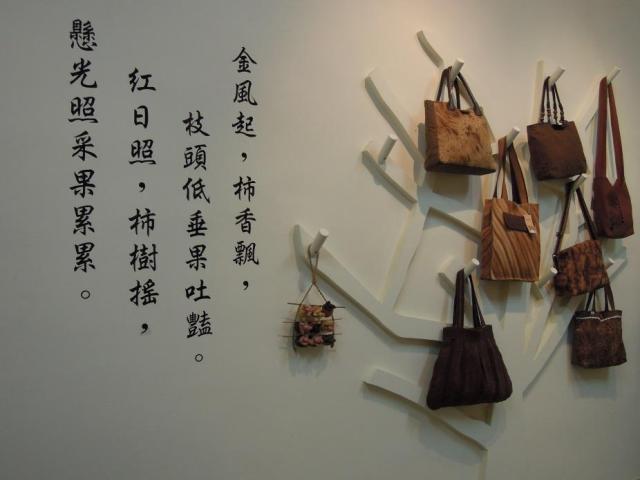
The Mark of Time— Persimmon Dye: A Stage to Make Dreams Come True
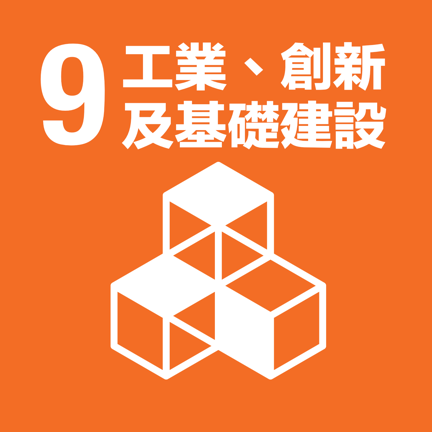
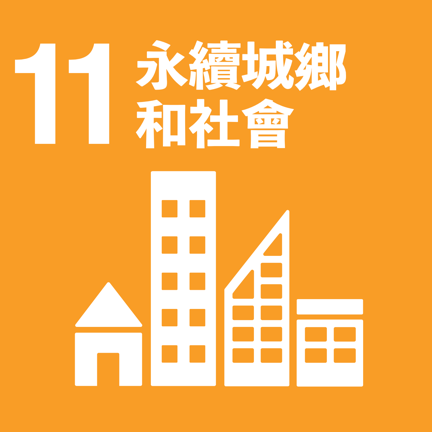
The Hsinchu County Persimmon Dye Cultural Association endeavors to promote local culture, pass down local crafts and develop local talents. It explores new resources from existing elements, developing and promoting the persimmon dye industry through research, training, and creative products. The Association hopes to attract young designers to develop creative products from persimmon dye, giving local housewives an opportunity to produce them. By combining Hakka culture, the Association plans to sell these creative products to the world, making persimmon dye a stage for people to realize their dreams.
Discovering Persimmon Dye
Hsinchu’s October wind brings two precious gifts: rice noodles and dried persimmon. Because of the natural air-drying effect caused by the strong and dry October wind, these two local specialties are particularly delicious. The making of dried persimmon may appear to be a traditional industry. However, two people have managed to transform it into a creative cultural material: persimmon dye.
Tsai Ling-hui worked at the agriculture division of the Xinpu Township Office ten years ago. To seek the chance to develop local industry, she came to the Weiweijia Dried Persimmon Factory. Tsai happened to see various handprints on the pillar. Out of curiosity, she asked how they originated. It was the owner, Mr. Liu’s mother, who often sat beside the pillar and peeled persimmons during her lifetime. It was difficult for her to get about due to old age, so she had to hold the pillar when getting up. The handprints of persimmon juice were left on the pillar and her clothes. Over time, the prints become the marks of time. When persimmon juice stains the pillar and clothes, it is hard to remove the marks. The color gets deeper and deeper over time. “Isn’t it the most natural and eco-friendly dye?” Tsai thought. This idea gave birth to the persimmon dye industry in Xinpu.
To further explore the possibility of using persimmon juice as pigment, Tsai looked hard for relevant information. She found that persimmon dye is a mature skill in Japan where it is known as kakishibui, but the only relevant research in Taiwan was in a paper published by Chen Jing-lin. Tsai therefore made contact with Chen, who was working as assistant professor of the Fashion Design Department of Shu-Te University. Chen agreed to come to Xinpu and give some classes on persimmon dye.
From Persimmon Dye Classes to the Hsinchu County Persimmon Dye Cultural Association
With the support of Tsai and Chen, the first persimmon dye training class was opened in Xinpu in 2005. Housewives and people from the dried persimmon industry signed up for the class. Over the course of teaching and learning, Chen and his students have tried various ways to apply persimmon dye. At the final exhibition, several people asked whether they could purchase products. Their inquiries strengthened people’s faith about bringing this skill to the market, and they also began to think about the possibility of making creative cultural products from persimmon dye.
The persimmon dye class was run for several years under the Industry Development Association. When people from the class began to acquire mature skills, Hsinchu County Persimmon Dye Cultural Association was officially founded in February 2010. Since then, it has been concentrating on studying, making, and promoting persimmon dye products. The Association received support from the Multi-Employment Promotion Program (MEPP) from the following year. With sufficient manpower, it has continued to grow strong.
In the past, people of the Association did not have a regular working space. Under the assistance of the Hsinchu County Government and Xinpu Township Office, the Association borrowed an unused office of a charitable organization as their dye workshop. In addition to an outdoor drying ground and a studio, the Association also built an elegant showroom and a DIY classroom.
Connection and Cultivation
The development of a persimmon dye industry helps improve the livelihood options of local persimmon farmers. The persimmon peel left over during the process of making dried persimmon is processed to become pigment. In the past, this peel and unripe persimmons were treated as garbage or compost. The development of persimmon dye gives them a new use. Previously the Association purchased persimmons from farmers in central and southern Taiwan but then decided to use local persimmons grown in Xinpu first. Hsu Chun-jing, the project manager of the Association, recalled an old farmer who took typhoon-damaged persimmons to the Association, asking whether they could help him with this situation. The Association solved the famer’s problem by purchasing the fallen fruit. Now, they buy unwanted persimmons from him every year to help increase his income.
The Association now receives orders from the public sector and enterprises. In addition, persimmon dye products are also sold at large markets, Guanxi Service Area and Taoyuan International Airport Terminal 1. In addition, the Association works on strategic collaboration with local enterprises, offering activities, such as DIY persimmon brush dye and boiling dye. To promote local culture, pass down local craft and develop local talents, the Association continues to develop relevant products and promote DIY activities. It also develops new products by combining local cultural elements and lifestyles and plans to open a direct sales store at a suitable location.
In the future, the Association plans to build a stage for local youngsters to develop their ideas. With their creative ideas, they will find their own calling instead of looking for employment at industry parks. There is also a group of older housewives who assist the designers to complete their work by offering professional sewing and dying skills.
Realizing Dreams with Persimmon Dye
Talking about the future, Hsu has many dreams. One time she went to a high-end fashion show, which motivated her to hold one in Xinpu. She hopes that one day the Association can host an international fashion show under the theme of persimmon dye. This event could not only show the public the beauty of Xinpu but also boost peripheral industries.
Hsu also plans to make persimmon dye a part of people’s everyday lives and blend it into the local culture of Xinpu. She also wants to build a cultural and creative park as well as a creative market on the existing base. In the market, the tea server sits on a mat made with persimmon dye, brewing the local Oriental Beauty tea. Visitors taste the dried persimmon while listening to Hakka music, buying all kinds of products produced in the community and made with persimmon dye.
With the development of persimmon dye, in addition to boosting local employment and adding new value to unwanted persimmon peel, the Association also creates new cultural and creative elements. In the future, the Association will continue strengthening its marketing and design ability by working with designers. It will combine various materials and cultural elements to develop more products. With branding as its main market strategy, the Association will strive to enhance quality, develop its market, mass produce relevant products, and head towards being a self-sustaining organization.
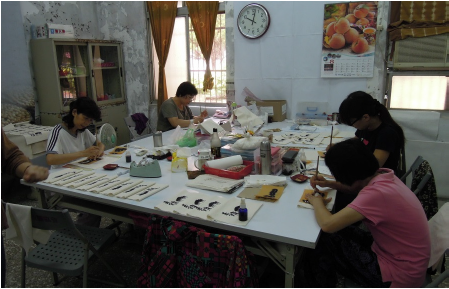
▲ Community housewives making customized persimmon dye gifts.
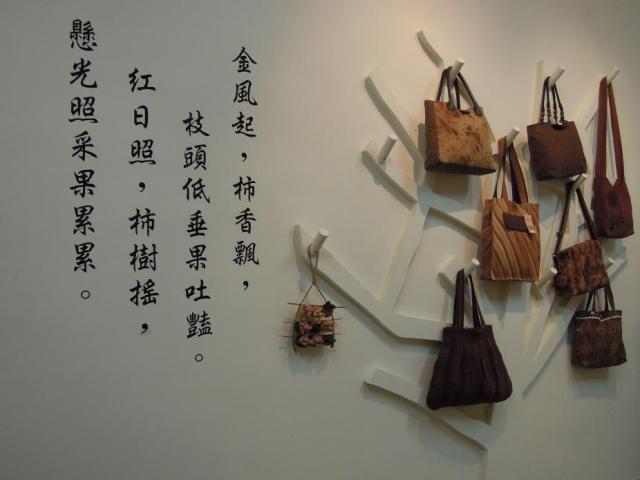
▲ Persimmon dye brings a new image and value to the persimmon industry.

This work is licensed under a Creative Commons Attribution-NoDerivatives 4.0 International License.
Please attribute this article to “Workforce Development Agency, Ministry Of Labor”.
